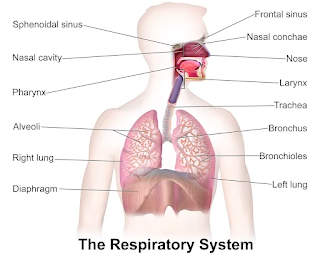Featured
- Get link
- X
- Other Apps
Pneumonia
 |
Pneumonia : A Common but Serious Chest Infection
Pneumonia is a type of chest infection that inflames the air sacs in one or both lungs. These air sacs, called alveoli, may fill with fluid or pus, causing symptoms such as cough with phlegm or pus, fever, chills, and difficulty breathing. It can range from mild to life-threatening, especially in infants, older adults, and people with weakened immune systems.
Causes of Pneumonia
Pneumonia can be caused by various infectious agents, including:
- Bacteria (e.g., Streptococcus pneumoniae – the most common cause)
- Viruses (e.g., influenza, RSV, and COVID-19)
- Fungi (particularly in people with weakened immunity)
The mode of transmission is usually through inhalation of airborne droplets from a cough or sneeze of an infected person, or from aspiration of oral secretions into the lungs.
Symptoms
Symptoms can vary depending on the type of organism causing the infection and the individual's overall health, but commonly include:
- Persistent cough, often producing mucus
- High fever and chills
- Shortness of breath
- Chest pain when breathing or coughing
- Fatigue
- Confusion, especially in older adults
Diagnosis
A healthcare provider may diagnose pneumonia through:
- Physical exam (listening for crackling or bubbling sounds in the lungs)
- Chest X-ray
- Blood tests
- Sputum tests
- Pulse oximetry (to measure blood oxygen levels)
Treatment
Treatment depends on the cause and severity:
- Bacterial pneumonia: usually treated with antibiotics
- Viral pneumonia: managed with rest, fluids, and antiviral drugs if needed
- Hospitalization: required in severe cases for oxygen therapy, IV fluids, and monitoring
Prevention
Several steps can help prevent pneumonia:
- Vaccination: against influenza, COVID-19, and pneumococcal bacteria
- Good hygiene: frequent handwashing
- Avoid smoking: as it damages lung defenses
- Healthy lifestyle: including adequate nutrition and exercise
Conclusion
Pneumonia is a serious but treatable chest infection. Early recognition and appropriate medical care are essential to reduce complications. If you or someone you know shows signs of pneumonia, especially if symptoms are severe or persistent, seek medical attention promptly.
- Get link
- X
- Other Apps



Comments
Post a Comment